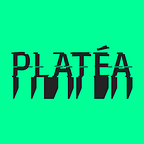5 types of infographics and when to use them
Infographics is a graphical way of presenting complex information to make it easier to read and publish. Infographics are divided into different types depending on the tasks, techniques, and communication channels used. Most infographics will have elements of multiple types of infographics. The most commonly used types of infographics are:
1) Timeline Infographic
If the story you want to tell includes multiple events or changes over time, you should use a timeline. From a reader’s view, these infographics are easy to understand because they follow a single flow. Important dates on the conventional timeline are marked with tags, date balloons, illustrations, or photographs.
The timeline can be strictly vertical or curved. The second option is better when you need to mark many dates, add more text and graphics.
When to use:
- Show history behind something
- Make a long, complicated story easier to understand
- Show how one thing leads to another
Best practices:
- Use a line to connect different points in time
- Try to keep the descriptions pretty brief
- Use bold, contrasting font to highlight the year or name of each event
- Make it visually exciting with icons or illustrations
Example:
2) Processes and How-To’s Infographic
A process is quite similar to a timeline. Both of them follow a single flow and are typically accompanied by directional cues like arrows and numbers. The key difference is that, unlike timelines, processes do not depend on the progression of time and focus on actual events rather than when they occur.
Process infographics will allow you to simplify and clarify each step. Most process infographics follow a straightforward top-to-bottom or left-to-right flow. Numbering the steps will make your process easy to follow.
When to use:
- Simplify a complex process into steps or pieces of information
Best practices:
- Number each step in your process to make it easy to follow
- Use arrows to indicate where the eye should look next
- Use an S-shape layout to fit many steps into one page
- Write your headers in a different font or colours from the body text to help them stand out
Example:
3) Versus or Comparison Infographic
A comparison infographic lists similarities or differences of two concepts (sometimes there can be more than two ones) that can be compared. This type of infographic can be helpful to highlight the superiority of a product or help people pick the best product for their needs.
When to use:
- Show differences between two (or more) similar things
- Show similarities of two (or more) unlike things
- Highlights before and after state for one thing
- Prove one option is superior/inferior to the other
Best practices:
- Divide your infographic by half to show two options
- Set two options apart by using contrasting colours
- Add icons or illustrations
Example:
4) Statistical infographic
A statistical infographic puts the focus on your data. It includes pie charts, bar graphs, and any other visual representations of data. The layout and visuals will help you tell the story behind your data.
When to use:
- Make data easier to understand
- Make facts and statistics more interesting to perceive
- Present survey results or research
Best practices:
- Select only the essential data. Every point should work together to tell a complete history
- Keep your graphs simple and stick to your colour palette
- Use subheadings and labels to help the reader understand what the graph is about
Example:
5) Geographic infographics
Geographic infographics use map charts as the focus visual. Different types of map charts work better for different data types. This type is often used in combination with statistical infographics.
When to use:
- Show regions hierarchically
Best practices:
- Use darker and lighter shades of the same colour to indicate a greater or lesser amount
- Use different colours to show different categories
Example:
Conclusion
Data visualization is an incredible skill. You can take data and turn it into beautiful graphics that tell people a story. These days, as data grows exponentially, it is becoming increasingly important to know how to communicate information using data. So use the current infographic types and their combination in your work and help people better understand your story.
